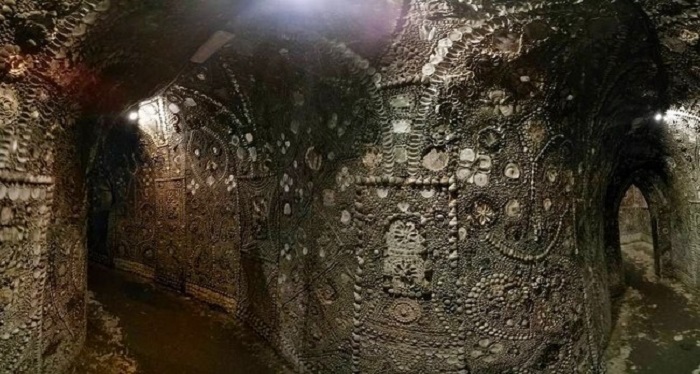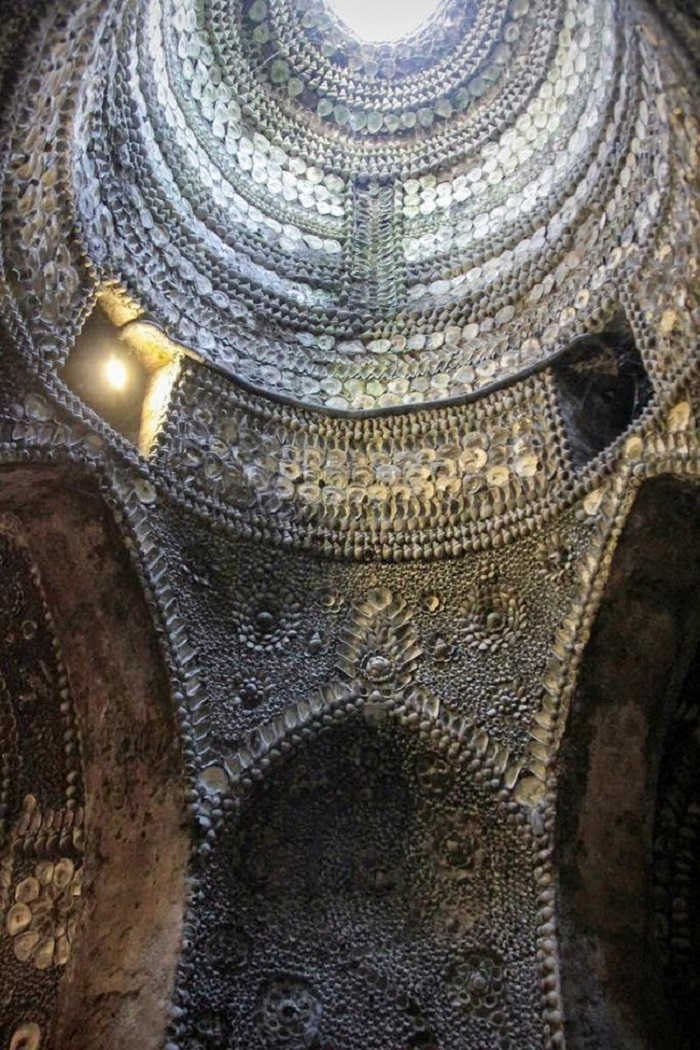
In the chalky soil under the English seaside town of Margate, someone has hewn an artificial cave and lined it with millions of seashells. No one knows who, when, or why — the popular story is that a laborer was digging in a field in 1835 when his spade disappeared into a void. Alerted to this mystery, James Newlove, the master of the nearby Dane House School, lowered his son Joshua into the darkness bearing a candle. Joshua would have found himself in a domed rotunda lined with shells, beyond which a winding passageway leads to a rectangular chamber of uncertain purpose. Newlove later purchased the land, installed gas lighting, and opened them to the public.
Even then the origins of the grotto were a mystery — and, as no scientific dating has been undertaken, we still don’t know when it was created. R.F. LeGear, who made an assessment for the Kent Archaeological Society, wrote, “Whoever commissioned and/or planned the elaborate designs for the shell panels must have been a well educated person who managed to entwine many different themes into the intricate patterns of literally millions of shells.” He suspects that a medieval denehole, or chalk-mining shaft, was reworked and expanded in the 17th or 18th century.
But “[a]s to the purpose of this enigmatic structure the writer can make no useful comment except that it is highly likely that the Shell Grotto’s original designer, whoever and whenever that was, has accomplished exactly what he set out to achieve i.e., speculation, controversy and conjecture which started with the discovery in 1835 and continues to the present day.”

(Thanks, Ron.)
